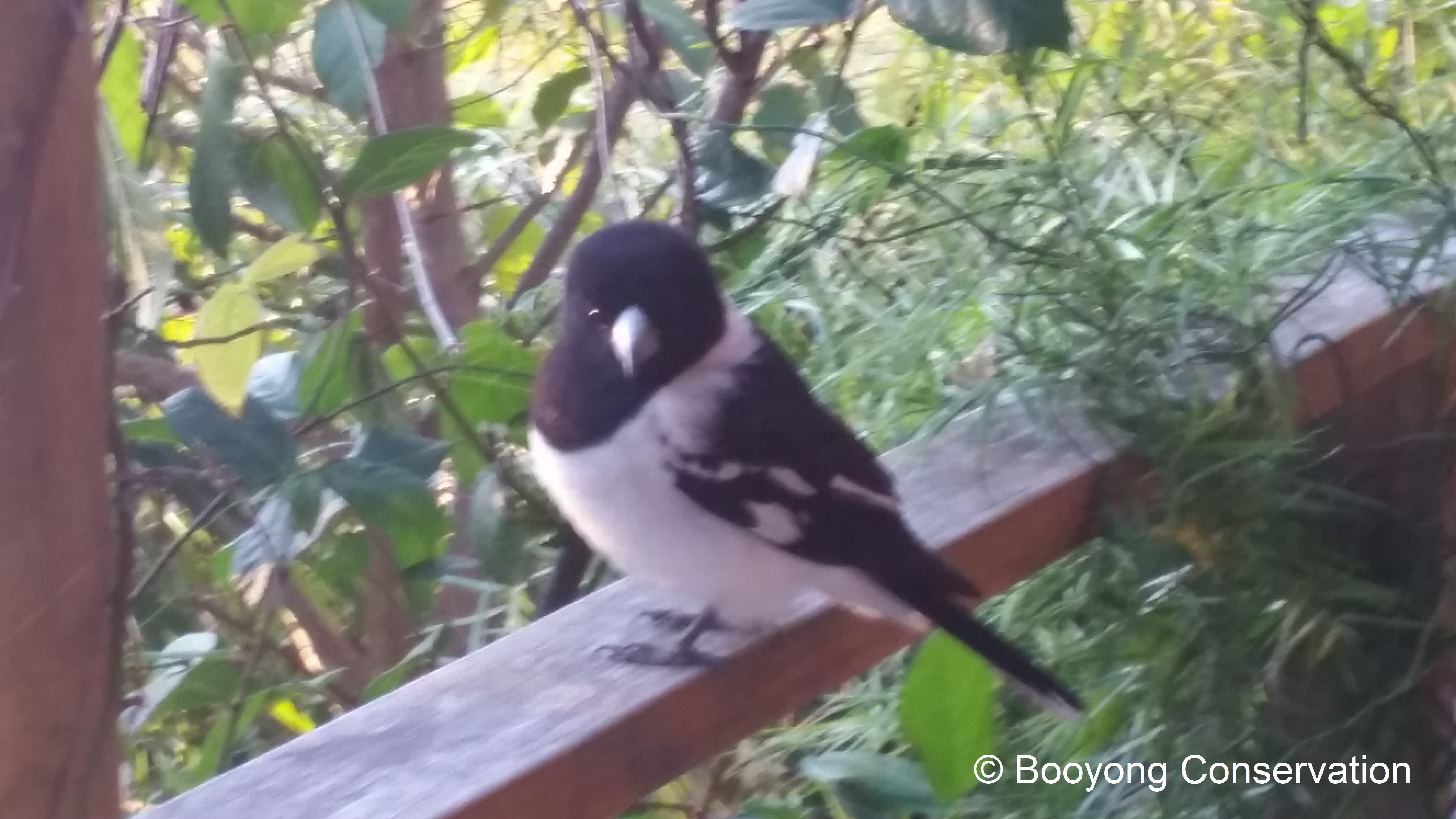So we suspect Bob’s been feeding this little guy for some time, he’s a constant companion as we’re working around the farm and not at all shy of people. During our last few visits Brett’s been feeding him a few pieces of sausage despite knowing that he shouldn’t, it’s so hard to resist such a cute little guy!
Scientific Name: Cracticus nigrogularis
What does it look like? The Pied Butcherbird is a medium-sized black and white bird. It has a full black hood, dark brown eye and long, hooked, grey and black bill. It has a broad white collar that goes all around its neck and a black bib (throat area). The rest of the underparts are white and the legs are black. The upper parts are mostly black, with large patches of white on the wings and rump. In flight, the white corners of the otherwise black tail are easily seen. Both sexes have identical plumage, but the male is slightly larger than the female. Young Pied Butcherbirds are generally duller than the adults are. The areas of black are replaced with brown and white areas are washed with buff. The birds also have an ill-defined bib, which becomes more distinct with age.
Where does it live? The Pied Butcherbird is found throughout the Australian mainland, with the exception of most of the southern and south-eastern coastline, and the more arid areas of the inland. It is absent from Tasmania.
Habitat: The Pied Butcherbird inhabits drier forests and woodlands and often approaches parks and houses. It is more often heard than seen, as it sings from a prominent perch.
Breeding: The breeding season of the Pied Butcherbird varies throughout its large range. The female constructs the nest and incubates the eggs alone, and is fed by the male and other members of the group. The nest is a bowl of sticks and twigs, lined with grasses and other finer material. It is usually built in an upright tree fork up to 5 m above the ground. More than one female may lay eggs in the same nest.
Feeding: All butcherbirds are aggressive feeders. Pied Butcherbirds prey on small reptiles, mammals, frogs and birds, as well as large insects. Most food is caught on the ground. The birds sit on an exposed perch and swoop down on their prey. Hunting groups may consist of several birds from a large group, which may comprise three or four adults and several young birds, but birds may also hunt alone or in pairs. At Booyong it appears to be a group of three.
Reference: http://www.birdsinbackyards.net/species/Cracticus-nigrogularis
